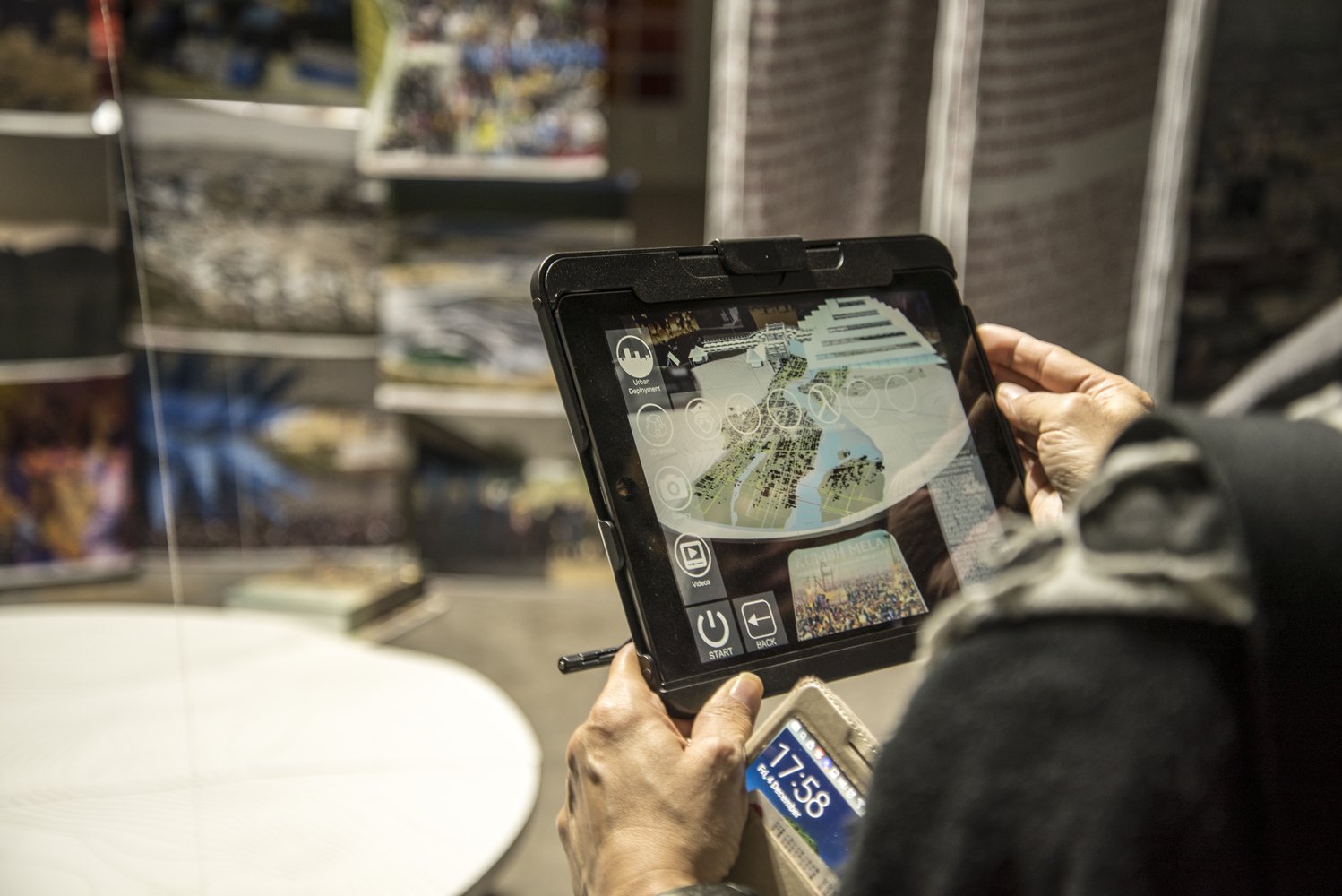In the central space of the pavilion, a model of the region of Allahabad in India, where the Kumbh Mela is held every 12 years, was placed. The challenge posed by the exhibition, and especially in the case of the Kumbh Mela, was how to show in a reduced space, the large amount of information mapped by Merothra and Vera, as well as offering the visitor the opportunity to visualize the information in a more dynamic and personalized way.
Through touchscreens and augmented reality, Pinochet developed a digital application that dynamically displays (3D models, videos, and animations) the different and varied layers of information extracted from this fascinating case of radical urbanism, on the physical model.
Save this image in your favouritesCourtesy of Felipe Vera
Using video game engines, the project developed a way to visualize, compile and combine in different ways not only the large amount of information present in Merothra and Vera's book (Kumbh Mela: mapping the Ephemeral mega city), but also to reorganize and combine the different scales: from the constructive detail understood as a system throughout the celebration to the flows of people to and from the site. All this is in order to find new orders and patterns from this interaction of information.
Editing: Radical Temporalities (The Ephemeral City)
Authors: Felipe Vera and Rahul Mehrotra in collaboration with Diego Pinochet
Production team: Juan Pablo Corral y Paulina Leyton
more information: Radical temporalities in Archdaily







